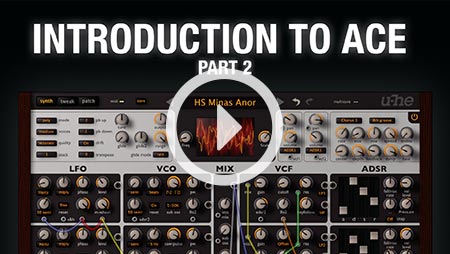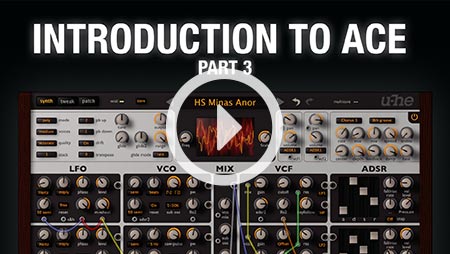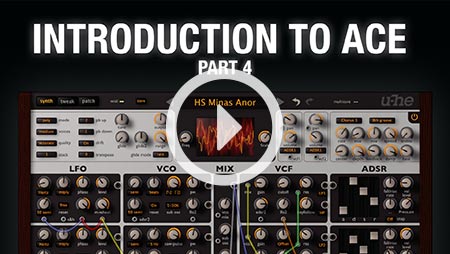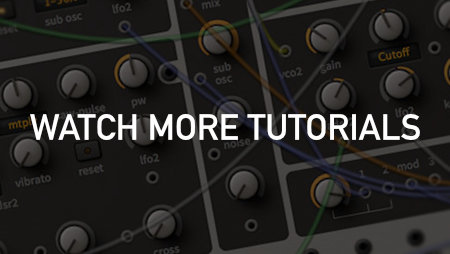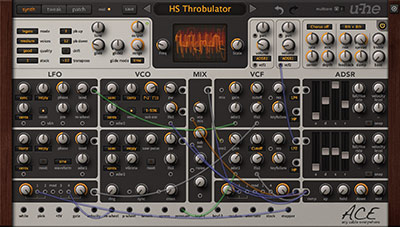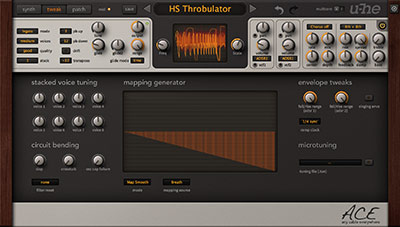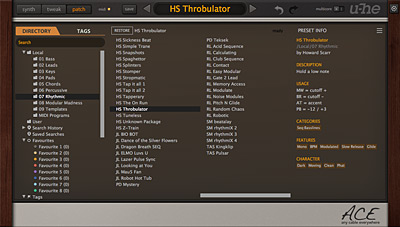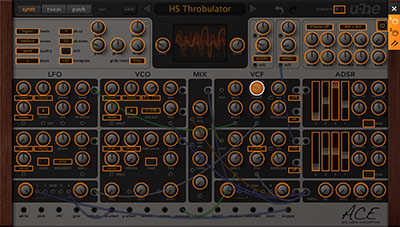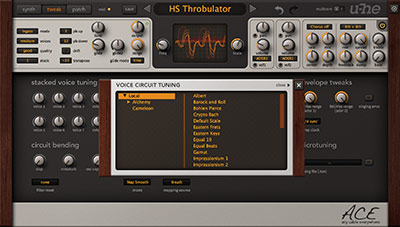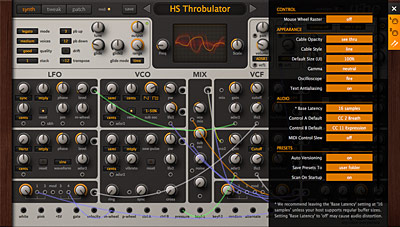

Gateway into modular
ACE: Any Cable Everywhere
Compact, clear, a careful selection of modules and semi-modular architecture makes ACE easy to learn. Simple but not simplistic. Compact but not limited. Clear but definitely not underpowered. With the ability to connect any output into any input, ACE is a powerful synth with tools and features ready for beginners or seasoned users.
ACE in the spotlight…
Hover over the dots  to learn about ACE’s features
to learn about ACE’s features

- Semi-modular architecture (with default routing)
- Oscillators include pulse width modulation (PWM), sync, internal ring and cross modulation (FM)
- Polyphonic (up to 16 voices), duophonic or monophonic (retriggered or legato)
- Powerful glide options: constant rate or constant time, percentage range control, per-oscillator offset
- Up to 8 voice unison (stack) with +/−2 octave individual detuning
- 2 multimode analogue-style filters
- 2 ADSR envelopes with fall/rise, snap, singing option for authentic analogue-style voice triggering
- 2 LFOs with 0Hz to 20kHz frequency range (can be used as VCOs)
- 2 multiplex modules for signal mixing / crossfading, ring modulation, amplitude modulation etc.
- 1 syncable and loopable ramp generator
- Mixer with modulation inputs
- MIDI modulation and performance: wheels, velocity, pressure, key follow, gate, 2 user-definable MIDI CC
- Circuit bending options: slop, crosstalk, oscillator cap failure
- 3 effects: chorus/phaser (4 types), delay (7 fixed options), bass and treble controls
- Multichannel MIDI support
- Resizable UI from 70% to 200%
- Over 920 factory presets
- NEW in v1.4.2: Support for Oddsound MTS-ESP
At the time we released our current plugin versions, Avid could not provide an AAX SDK that would let us build Universal Binary AAX plugins. For this reason, we currently cannot support Pro Tools for Mac. Pro Tools for Windows is still supported.
For the time being, macOS Pro Tools users who are not running the native Silicon version should use the previous versions of our plugins, available from the Release Archive.
We hope to start work on native Silicon AAX support this year, as soon as our tight schedule allows. No ETA can be quoted yet.
Sights and sounds
- Videos
- Demo Tracks
- Screenshots
New Frontiers
TasmodiaWet Experience
Urs Heckmann performs a bit of sonic experimentation with ACE.U-bahn
Einsteigen bitte! DocT takes us on a slow, heavy ride.Dumb ‘n’ ACE
A raucous track when ACE meets breakbeats from DocT.ACE F
Urs gets inspired by a particular ’80s comedy movie.Cold as ACE
DocT provides a track that swirls and sweeps, moving from ambient and pulsing rhythm.Patch Sampler
Rob Lee runs through a some ACE factory patches.The “boxes and cables” philosophy of modular synthesizers gives you the freedom to create your own custom instruments. Once you start connecting the sixteen modules in ACE—exploring new combinations, cross-pollinating ideas—the vast potential of modular soon becomes clear.
Sounds
The two VCOs act as the main sound generators, but as ACE does not differentiate between audio and control (modulation) signals, the full-range LFOs can also be used to generate audio frequencies.
ACE’s oscillators are modelled on analogue circuits, including instabilities and various non-linear characteristics. You can push these characteristics further using the Circuit Bending options.
If the bottom end needs beefing up, try adding the sub-oscillator. For more intense, complex sounds, try VCO2’s ring modulation, sync and cross modulation.
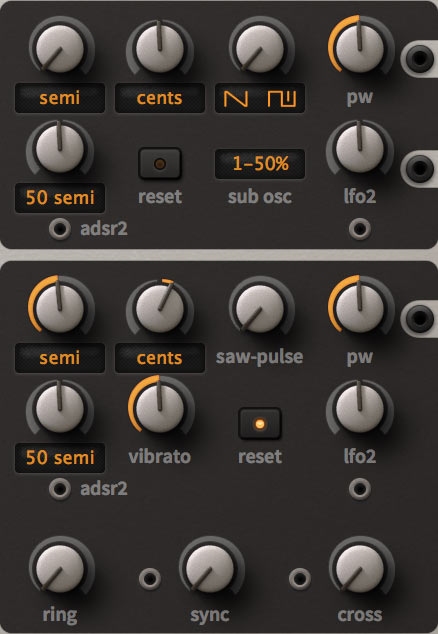
VCO panel
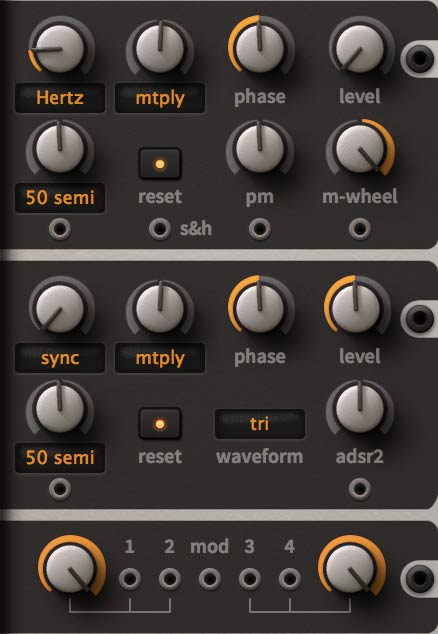
LFO panel
The LFOs can be co-opted for sound generation. They are similar to the VCOs but have a different feature set, including the possibility of phase modulation (commonly referred to as FM synthesis) and custom waveforms (LFO2 only). Wild experimentation is welcome here—draw any waveform or use the Spectralize function to create additive waves.
Mapping Generator
Not typically found in analogue synthesizers, ACE’s Mapping Generator is a useful addition with a variety of uses. The Mapping Generator is a list of up to 128 values. You can use the drawing tools to edit the values and create your own patterns, or choose pre-built shapes. This map can be stepped through for each played note, it can create per-note offsets, it can transform any modulation source or be used as the LFO2 waveform.
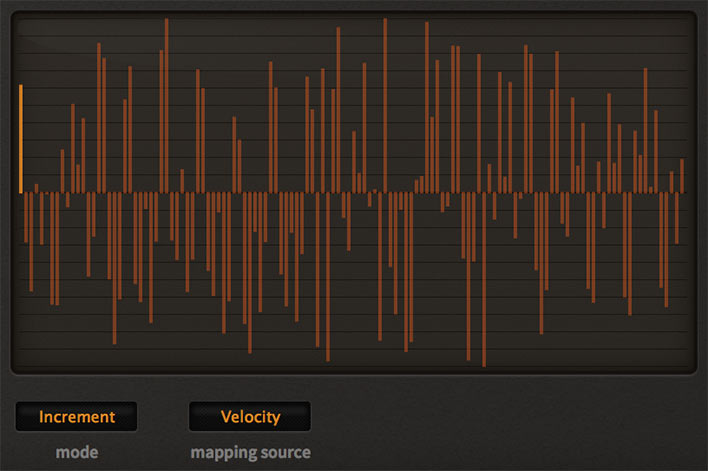
Mapping Generator
Filter
Like the oscillators, the two filters are modelled on analogue hardware and deliver satisfyingly analogue results. You can overdrive the filters without introducing any harsh distortion, and the resonance remains intact. Or you can take advantage of the self-oscillation feature for chaotic timbres and more experimental sound design.
For an extra aggressive sound, route your signal through both filters and crank the resonance on the second filter. Both filters are cascade type multimode circuits with two parallel outputs each.
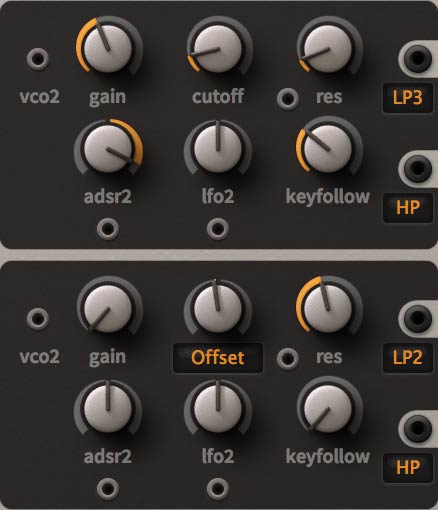
Filter panels
Cables anywhere and everywhere
ACE takes after hardware modular synthesizers, although it is not a truly modular design, more correctly it is semi-modular. ACE has a default fixed architecture (like for instance the ARP 2600), which means you can start making noise immediately ‘out-of-the-box’. Any default routing can be overridden by patching cables, which means that the options are practically limitless.
ACE does not differentiate between audio signals and control signals. Any of the outputs can be plugged into any of the signal inputs. Hook things up, explore new ideas and crazy combinations. Try LFOs as audio oscillators or a VCO as LFO. Plug an LFO into a filter, then use the filter as an FM source for an oscillator.
Sound experimentation awaits, limited only by your imagination… and dinner time.
Signal sources
An array of output sockets provide signals from a variety of different sources: noise, MIDI controls (modwheel, velocity etc.), mapping generator and more…
Use these to add organic life-like dynamics, modulation and refinments your sounds.
Effects
Add final touches using the global effects. Pick from a classic stereo chorus with four modes (including phaser) to add richness, a stereo delay with seven immediately selectable modes to add movement, and finally a pair of controls to boost treble and bass.
Ramp generator
If the two ADSRs and two LFOs are not enough, try the host-syncable Ramp Generator (essentially a trapezoid, which combines elements of both).
Multiples
Common to most modular setups, multiples are mix/split devices. Signals are merged and sent onward, or split and sent to different inputs. In ACE the multiples do act as a simple mixer, or can be enlisted for much more interesting possibilities. That is why we renamed them Multiplex. Using the modulation input and some clever cable arrangements, the Multiplex modules can do ring modulation (RM), amplitude modulation (AM) or both at the same time. Or crossfading or inversion…
Envelopes
Without envelopes, your patches would just turn on and off with each note, organ style. Envelopes add dynamics over the length of the note. ACE has classic ADSR envelopes, but with a few extras directly available for more interesting results: Snap, fall/rise, level modulation, rate modulation, velocity. The envelopes can be further with modified in the Envelope Tweaks section. Switch on the singing envelopes for classic analogue retriggering behaviour, or adjust the fall/rise limits.
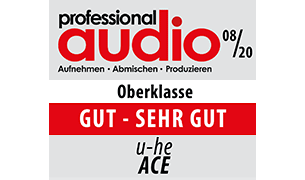
August 2020
Gut - sehr gutProfessional Audio

December 2010
2010 - Editor's ChoiceComputer Music

December 2010
2010 - Performance AwardComputer Music

December 2010
2010 - Innovation AwardComputer Music

December 2010
2010 - Value AwardComputer Music
“A steal for what is, hands-down, one of the best synths we’ve ever used.…”
February 2010
“If you’re even thinking of getting into modular synthesis, you simply have to try out this monster.”
May 2015
“Ein Software-Synthesizer der ersten Wahl, den wir schon eher hätten begutachten sollen.”
May 2010
Configuration
- Scalable UI from 70% to 200%
- MIDI learn page and editable list
- Global preferences page
LFOs
- 2 LFOs with a frequency range of 0Hz-20kHz
- LFOs can be used as VCOs (and vice versa)
- LFO2 can adopt the mapping generator’s waveform (tap map)
Effects
3 effects: chorus/phaser (4 types), delay (7 fixed options), bass and treble controls
Multiples
2 multiplex modules for signal mixing / crossfading, ring modulation, amplitude modulation etc.
Oscillators
- 2 VCOs with a frequency range of 0Hz-20kHz
- VCO1 has linked sub-oscillator
Oscilloscope
Envelopes
2 ADSR envelopes with fall/rise, snap, “singing” option for authentic analogue-style voice triggering
Global
- Polyphonic (up to 16 voices), duophonic, monophonic, or legato mode
- Up to 8 voice unison (stack) with +/−2 octave individual detuning
- Pitch transpose, drift and glide control
- Quality setting: draft, standard, good, accurate
Filters
- 2 analogue style filters (VCF) with self-oscillation
- Filters are multimode with lowpass (×4), highpass,
bandpass and bandreject modes - Two parallel outputs per filter
Generators
White and pink noise generators
Tweak
- 1 mapping generator with up to 128 values, comprehensive drawing tools
- 1 syncable and loopable ramp generator
- Extra envelope options: snap, singing envelopes, ramp clock
- Circuit bending options: slop, crosstalk, oscillator cap failure

Download the demo and enter your serial number to unlock the full version. The demo version emits crackling sound at irregular intervals.
ACE 1.4.2 (revision 12092)
Released August 10, 2021
Release notes
* About Linux: Before purchasing, please be aware the Linux versions of our plug-ins are still considered beta. While the plug-ins are stable, we are not able to provide the same level of support for these products as we do for the macOS and Windows versions. Support is provided via the Linux and u-he communities on our forum ![]() .
.
Requirements
![]() Mac OS X 10.10 or newer
Mac OS X 10.10 or newer
or
![]() Windows 7 or newer
Windows 7 or newer
or
![]() Linux
Linux
- Host software / DAW
- 1GB RAM, more recommended
- 1000 × 600 or larger display
- 35-100 MB free disk space
- Modern CPU required:
Windows/Linux: Intel Nehalem or newer, AMD Bulldozer or newer
Mac: Intel Nehalem or newer, Apple M1 - Linux: glibc version 2.28 or newer
Formats
ACE is not a standalone product, it requires host software. ACE is compatible with nearly all DAWs.
macOS:
AUv2, VST2, VST3, 64-bit only
temporarily no AAX (read more)
Windows:
VST2, VST3, AAX*
32-/64-bit
* AAX requires Pro Tools 10.3.7 or later
![]()
VST is a trademark of Steinberg Media Technologies GmbH, registered in Europe and other countries.
User Guides
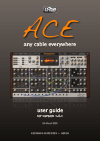
Downloads for ACE
Try the latest builds of ACE, which include improvements and bug fixes. Note: these are stable, but still beta versions.
Older ACE installers are in our release archive (for legacy systems).



